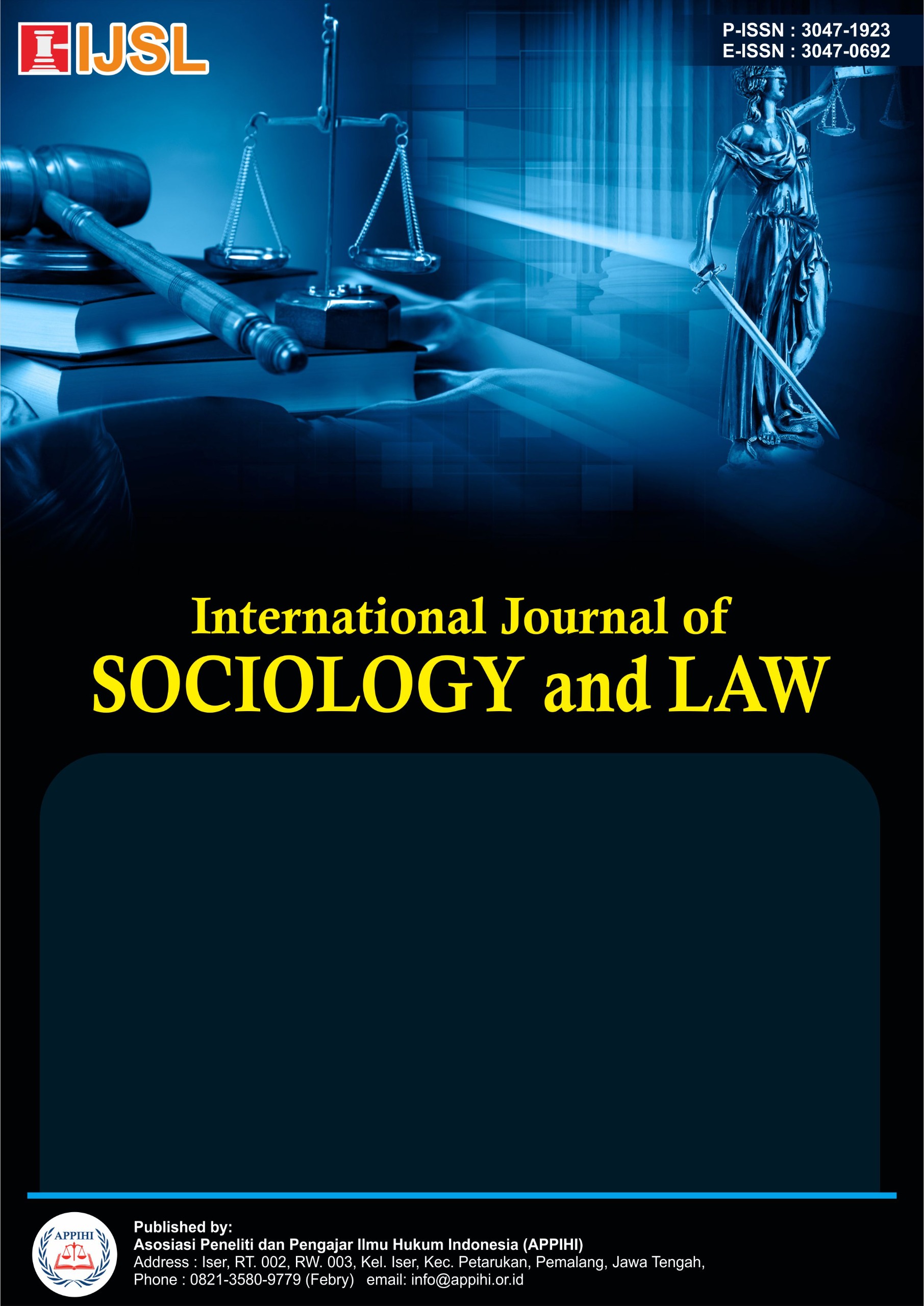Criminal Law Policy in Dealing With The Development of Transnational Cyber Crime
DOI:
https://doi.org/10.62951/ijsl.v2i2.652Keywords:
Criminal Law, Cybercrime, Transnational, Legal Policy, International CooperationAbstract
This abstract analyzes the urgency of criminal law policy in tackling the rapidly evolving transnational cybercrime. The rapid advancement of information and communication technology has created increasingly complex, cross-border, and difficult-to-detect cybercrime modus operandi. Indonesia, as part of the global community, faces serious challenges in formulating and implementing effective regulations to combat these crimes. This research aims to identify the challenges of criminal law in Indonesia in dealing with transnational cybercrime and to formulate adaptive strategies to strengthen the existing legal framework. Normative-empirical research methods are employed with a case study approach, legislative analysis, and international legal comparison. The findings indicate that the harmonization of national laws with international standards, enhancement of law enforcement capacity, and strengthening of inter-state cooperation are key. Innovation in criminal law approaches is also needed, focusing not only on prosecution but also on prevention and recovery of losses. The conclusion of this study emphasizes the necessity of comprehensive reform in criminal law policy, encompassing substantive, procedural, and institutional aspects, to create a system responsive to the dynamics of transnational cybercrime.
Downloads
References
Ahmad, F. (2018). Cyber Criminal Law: A Comparative Review. Jakarta: Rajawali Pers.
Andayani, A. (2019). "Challenges of Law Enforcement Against Cybercrime in Indonesia". Ius Quia Iustum Law Journal, 26(1), 1-18.
Asmadi, EA (2020). Cybercrime: Theory and Practice of Law Enforcement. Yogyakarta: Thafa Media.
National Cyber and Crypto Agency (BSSN). (2023). Indonesian Cyber Security Annual Report 2022. Jakarta: BSSN. (For example, you can search for the latest relevant report)
Brown, I., & Korff, D. (2018). The EU Data Protection Regulation and Cybercrime. London: Springer.
Casey, E. (2019). Digital Evidence and Computer Crime: Forensic Science, Computers, and the Internet. San Diego: Academic Press.
Dahlan, M. (2017). "Legal Aspects of Proving Cyber Crime". Jurnal Mimbar Hukum, 29(1), 12-25.
European Union Agency for Cybersecurity (ENISA). (2021). ENISA Threat Landscape 2021. Greece: ENISA. (For example, you can search for the latest relevant reports)
Ghani, A. (2019). Cybercrime and International Law: A Comparative Study. New York: Routledge.
International Telecommunication Union (ITU). (2023). Global Cybersecurity Index 2020. Geneva: ITU. (For example, you can search for the latest relevant report)
European Commission. (2001). Convention on Cybercrime (Budapest Convention). CETS No. 185. Strasbourg: Council of Europe.
Lesmana, A. (2021). "The Role of International Cooperation in Eradicating Transnational Cybercrime". Journal of Legal Studies, 10(2), 201-215.
Moeljatno. (2008). Principles of Criminal Law. Jakarta: Rineka Cipta.
Negara, SW (2022). Cyber Law and Challenges in the Digital Era. Jakarta: Sinar Grafika.
Rachmad, Z. (2020). "The Urgency of Harmonizing National Legislation with the Budapest Convention in Handling Cybercrime". Journal of Law and Development, 50(3), 578-592.
Setyawan, H. (2018). Information Technology Crimes. Bandung: Citra Aditya Bakti.
United Nations Office on Drugs and Crime (UNODC). (2022). Global Study on Cybercrime 2022. Vienna: UNODC. (For example, you can search for the latest relevant report)
Law Number 11 of 2008 concerning Electronic Information and Transactions as amended by Law Number 19 of 2016.
Law Number 27 of 2022 concerning Personal Data Protection.
Wasiati, N. (2021). "Legal Analysis of Jurisdictional Challenges in Handling Cross-Border Cybercrime". Journal of Criminal Law and Criminology, 5(1), 45-60.
Downloads
Published
How to Cite
Issue
Section
License
Copyright (c) 2025 International Journal of Sociology and Law

This work is licensed under a Creative Commons Attribution-ShareAlike 4.0 International License.





